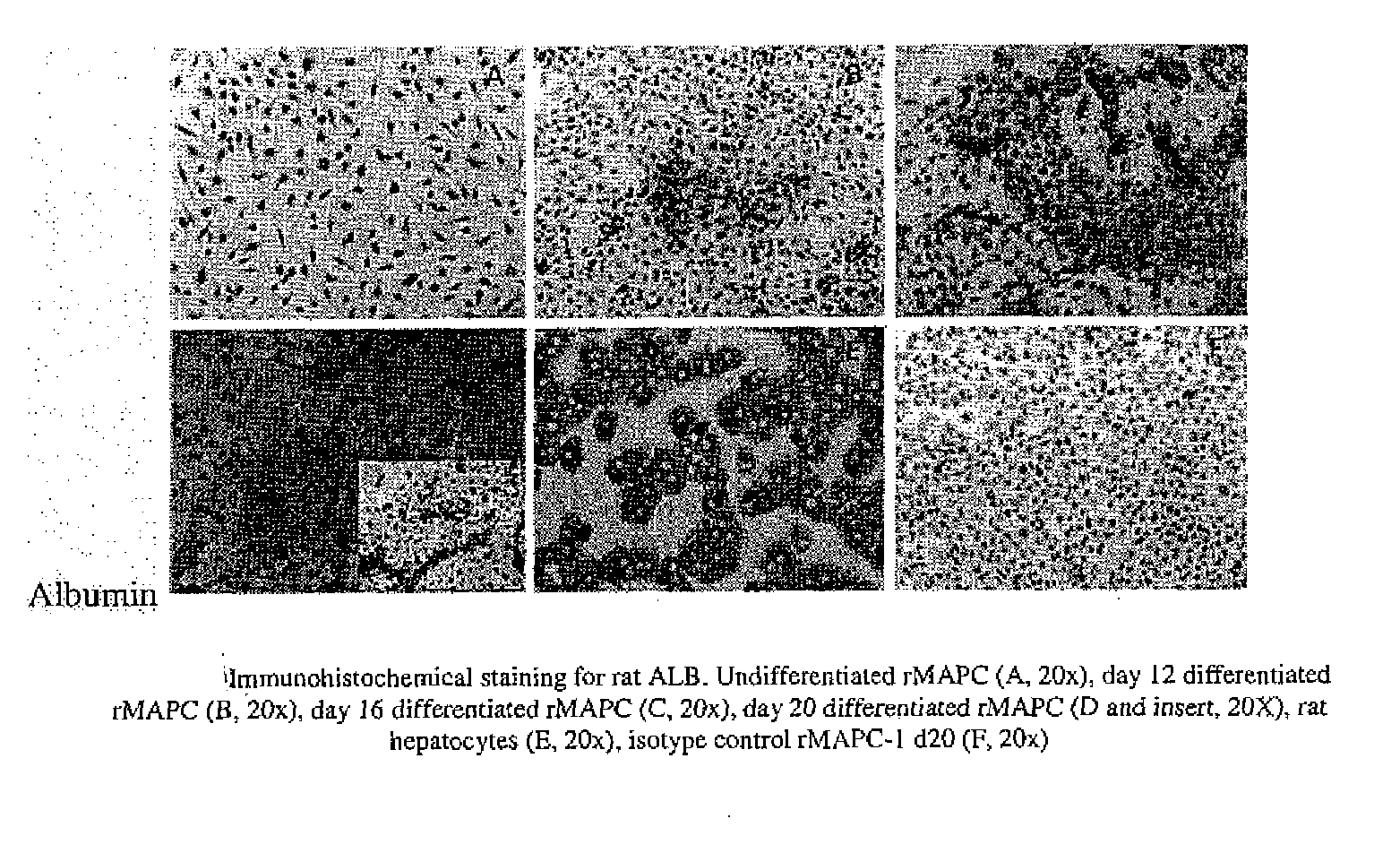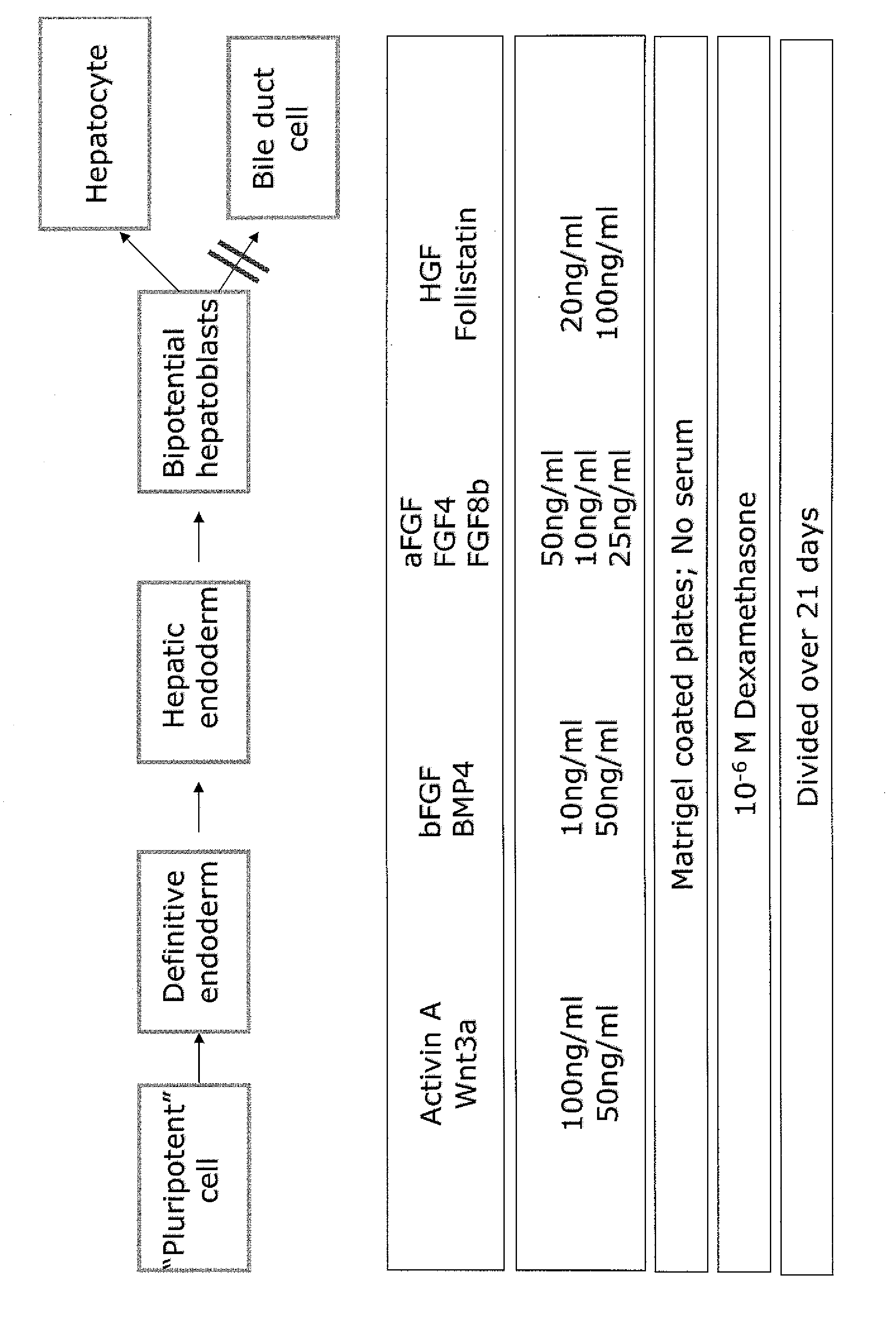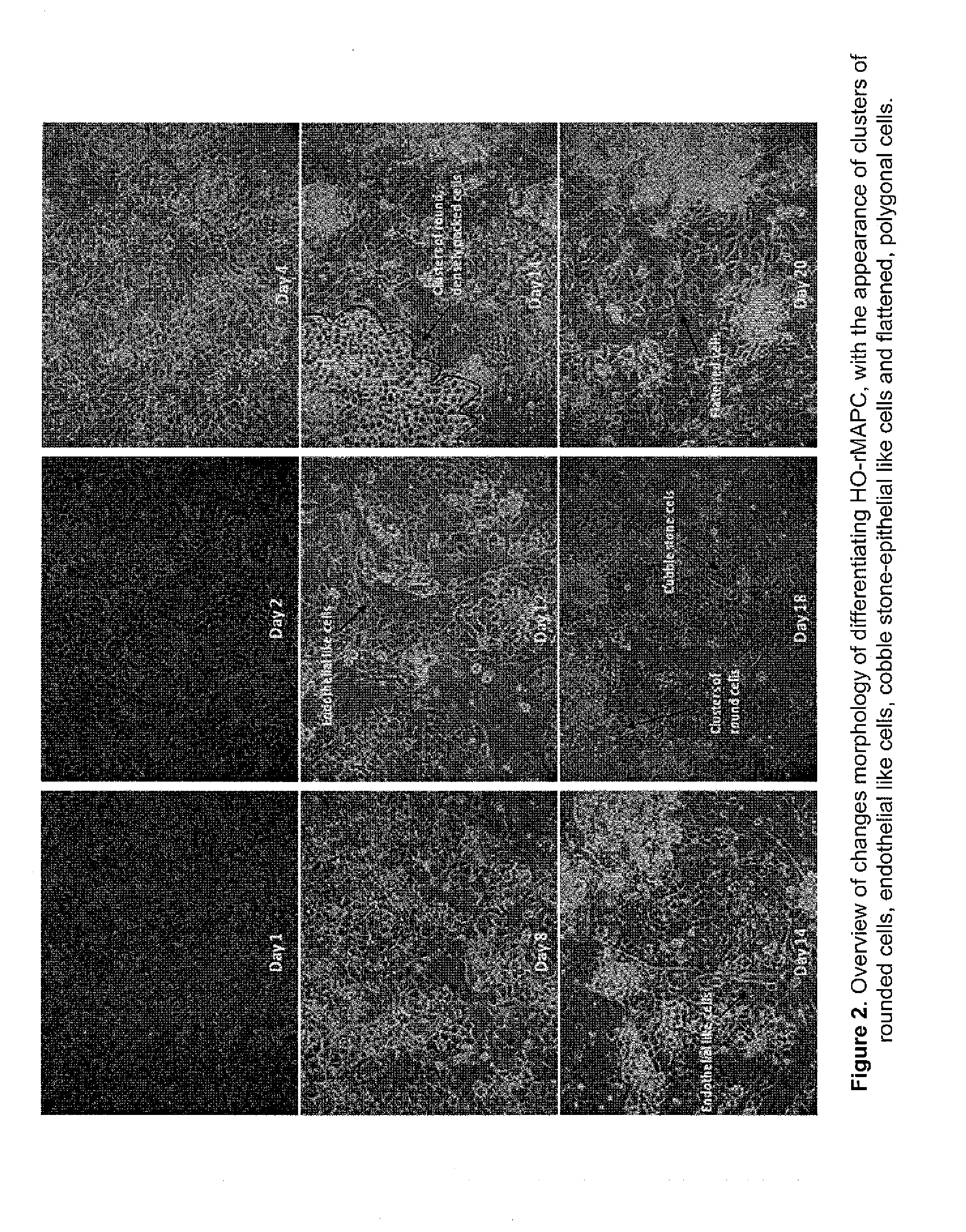Optimized Methods for Differentiation of Cells into Cells With Hepatocyte and Hepatocyte Progenitor Phenotypes, Cells Produced by the Methods, and Methods of Using the Cells
a technology of hepatocyte progenitor and differentiation method, which is applied in the field of optimizing methods for differentiation of cells into cells with hepatocyte and hepatocyte progenitor phenotype, cells produced by the methods, methods, etc., can solve the problems of liver failure, loss of hepatic cell mass below a critical level, and limited treatment by worldwide shortage of donor organs
- Summary
- Abstract
- Description
- Claims
- Application Information
AI Technical Summary
Benefits of technology
Problems solved by technology
Method used
Image
Examples
example 1
[0264]I. Methodology
[0265]1. Rat MAPC Culture
[0266]A rat MAPC cell line was derived from bone marrow of a male Fischer (F344) rat by Prof. Y. Jiang at the University of Minnesota, Minneapolis, USA. This established rat MAPC line was used in the experiments described below. Undifferentiated rat MAPCs were cultured at low cell density (˜300 cells / cm2) in low serum (2%) and oxygen (5%) conditions. Expansion medium consisted of DMEM (60%), MCDB (40%) supplemented with leukemia inhibiting factor (LIF), growth factors (10 ng / ml PDGF and 10 ng / ml EGF), dexamethasone (5×10−8 M), penicillin and streptomycin (1×), ascorbic acid (1×), beta-mercaptoethanol and insulin-transferrin-selenium with linoleic acid (ITS+1). Culture dishes (˜58 cm2) were coated with rat fibronectin for 30 minutes at 37° C. or for 60 minutes at room temperature. In order to inhibit initiation of differentiation, intercellular contact was prevented. Therefore, every 48 hours, MAPC were trypsinized (0.25 or 0.05% trypsin),...
example 2
I. Methodology
[0321]The human embryonic stem cell (hESC) line, H9, and induced pluripotent stem cell (hIPSC) were differentiated according to the standard protocol. At different time points (prior to cytokine exposure, at the three time points following exposure to the three other sets of cytokines as described herein, and the final time point representing the endpoint cell type), samples were obtained for RT-qPCR analysis of PS genes, ME / DE genes, hepatoblasts and definitive hepatocyte genes. In addition, cultures were evaluated for secretion of albumin, conversion of NH3 to urea, glycogen storage, metabolization of bilirubin, GST activity, and expression of coagulation factors Factor V, Factor VII, Protein C, gamma-glutamylcarboxylase (GGCX) and Vitamin K epoxide reductase (VKOR).
II. Results
[0322]The RT-qPCR results are shown in FIG. 11 A-J. The RT-qPCr results also are shown in Table 3a-b. Table 3a and 3b provide values for expression of genes in the human ESC line H9 and the hiP...
PUM
 Login to View More
Login to View More Abstract
Description
Claims
Application Information
 Login to View More
Login to View More - R&D
- Intellectual Property
- Life Sciences
- Materials
- Tech Scout
- Unparalleled Data Quality
- Higher Quality Content
- 60% Fewer Hallucinations
Browse by: Latest US Patents, China's latest patents, Technical Efficacy Thesaurus, Application Domain, Technology Topic, Popular Technical Reports.
© 2025 PatSnap. All rights reserved.Legal|Privacy policy|Modern Slavery Act Transparency Statement|Sitemap|About US| Contact US: help@patsnap.com



